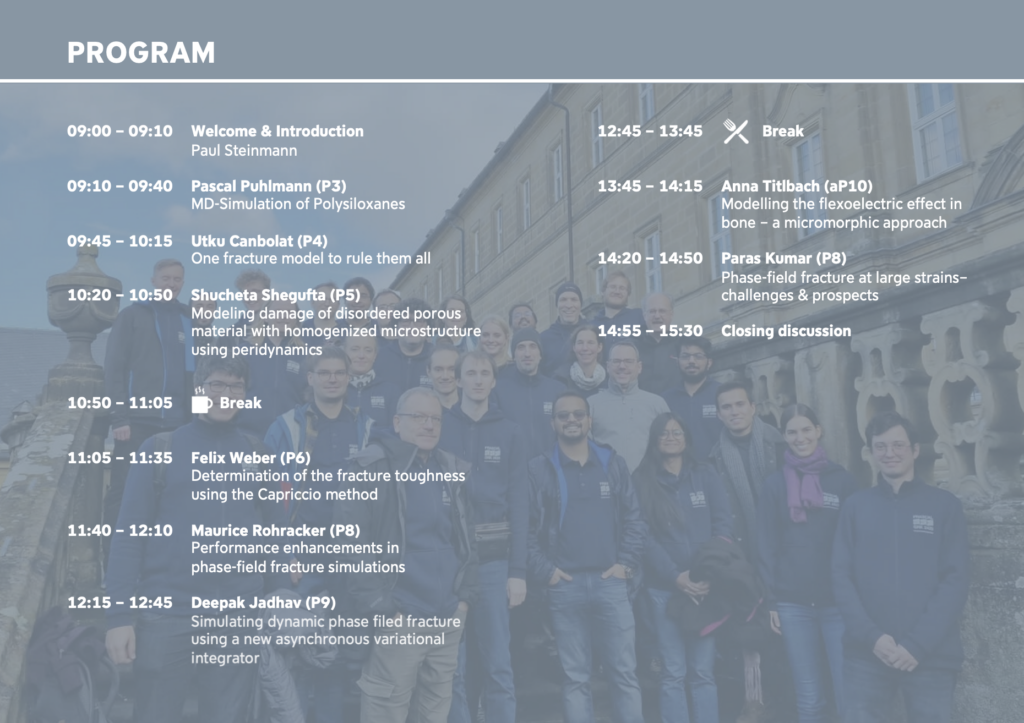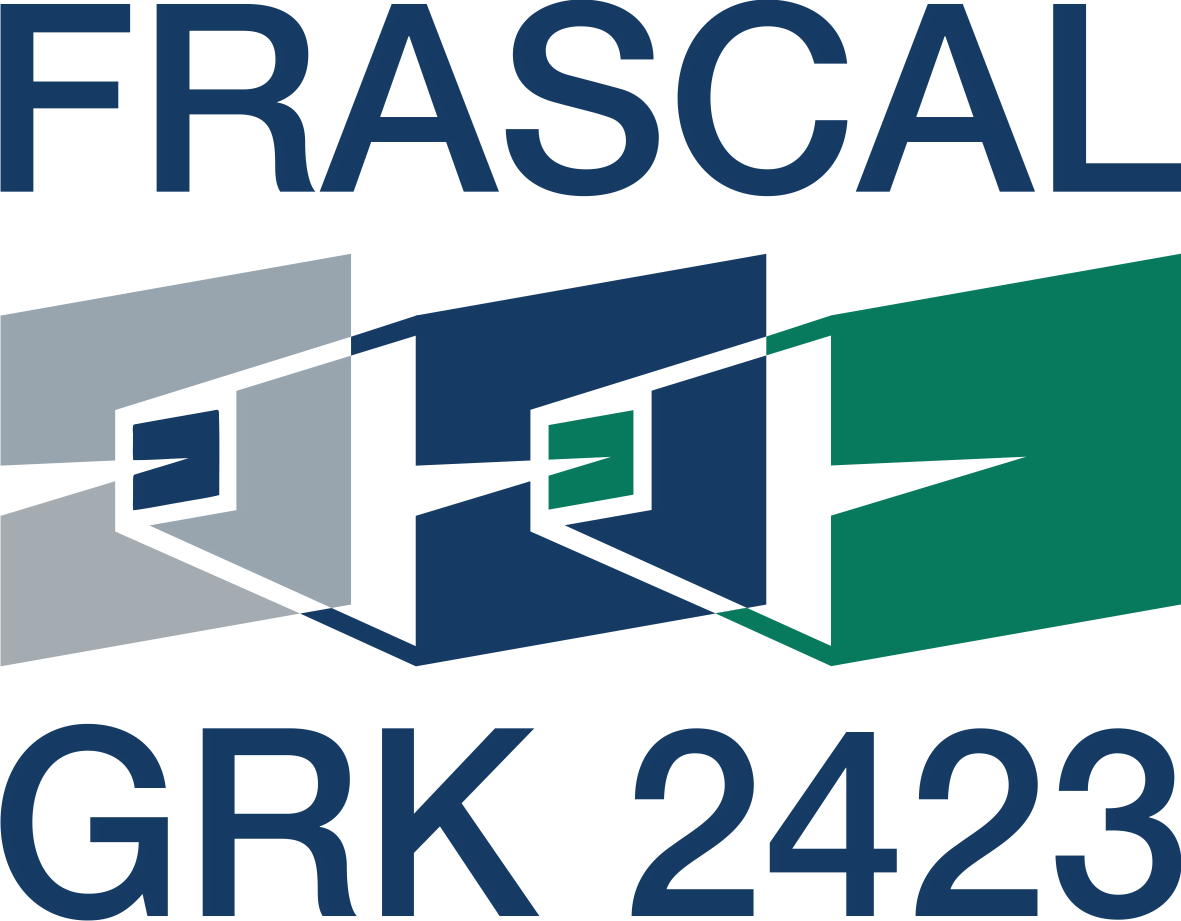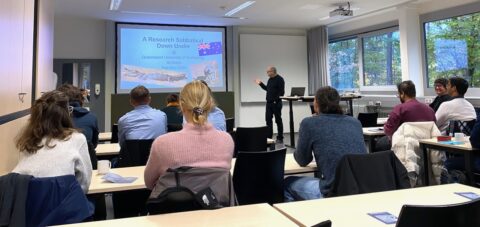10th FRASCAL Seminar on 25th of October
The second part of the FRASCAL Seminar 2024 was introduced by the spokesperson Prof. Steinmann with an entertaining and informative talk in which he gave insights into his time in Australia. Prof. Steinmann and doctoral researcher Anna Titlbach connected there both professionally and physically on the topic of biomechanics.
Pascal Puhlmann talked about his (linear) polysiloxanes, their simulation within the reaction of polycondensation and the potential influence of chain length on material properties. Utku Canbolat differentiated fracture models for the conception of the holy grail of fracture models. Shucheta Shegufta presented ideas of studying the effect of microstructure by artificially generated microstructures and the role of convergence. The Capriccio method and its use in simulating fracture toughness taking the example of SiO2glass was introduced by Felix Weber.
Maurice Rohracker then reports how to handle numerical difficulties in phase-field simulations by using performance enhancing techniques. A new asynchronous variational integrator for the simulation of dynamic phase field fracture was presented by Deepak Jadhav. After the lunch break Anna Titlbach compared micromorphic and flexo-micromorphic elasticity in bones and gave insights into the idea of the flexoelectric effect. Paras Kumar reported on the latest developments within his postdoc project on phase-field fracture at large strains and thus concluded the 10th FRASCAL seminar.


